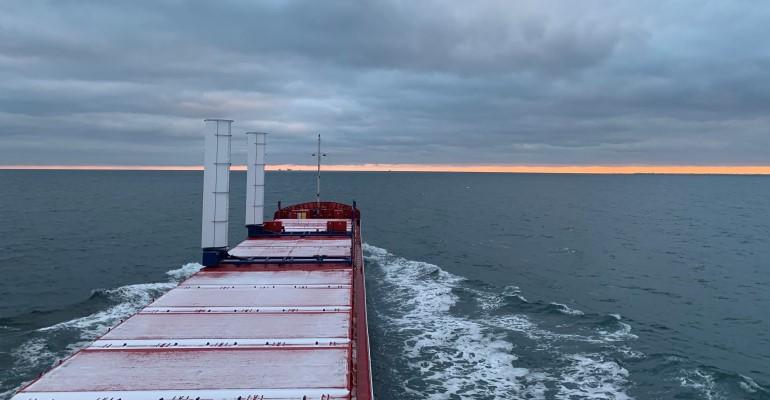The Rhenus Group has made major changes to re-equip two canal pushboats operated by Deutsche Binnenreederei (DBR) so that they now have stage V engines. They are therefore ready to accommodate future requirements. The modernisation work is taking place as part of the voluntary ongoing development plan for the Rhenus fleet to meet climate protection goals.
This measure is just one of many being introduced as part of the process of comprehensively re-equipping the entire fleet with the latest generation of engines. While the new construction of more sustainable hydrogen-powered vessels is a long-term project, the Rhenus Group is retrofitting more and more older vessels with more modern and therefore more environmentally-friendly technology in the short term. The two canal push boats, RSPSB146 and RSPSB153, which were built in the 1970s, are the first to undergo this process; they are being equipped with the latest engine technology that is available in the marketplace at this time.
It has taken about ten months to convert the two vessels. The old engines have been replaced with modern diesel generators manufactured by SCANIA and Caterpillar – they are truck engines, which are also certified for use onboard inland waterway vessels. They operate with stage 5 exhaust gas treatment and ensure that particles, that damage the environment, are no longer able to make their way into the air. This means that Rhenus is achieving a reduction in pollution caused by particulate matter of as much as 40 percent. The engines have a rating of 740 kW, which represents a tripling of the performance of the former units. The engine room has been completely gutted and refurbished to create space for the significantly larger engines.
All the old pumps, electronic equipment, and sub-assemblies have given way to the latest electronics and a modern control cabinet. The new engine is encapsulated in a Silence Pack enclosure and operates very quietly so that the crew on board can rest at night. A new power train with thrust bearings and shaft seals has been added and the rudder hydraulics has been thoroughly updated. The two vessels will continue to operate on the eastern German inland waterways. “Most of the vessels operated by German inland waterway companies are between 30 and 50 years old. This applies to ours too. Scrapping them makes absolutely no sense at all, particularly as it is so simple to refit them in a suitable manner. That’s exactly what we’re seeking to do with our programme entitled German inland waterway shipping – evolving for the future,” says Thomas Kaulbach, the Managing Director of Rhenus PartnerShip.
Setting course for sustainability
Just this year, Rhenus presented the first flagships of a new, low-emission fleet generation to provide sustainable inland waterway shipping in the future. The push-barge combinations operate reliably with a hydrogen-powered drive train and electric batteries, even if there is a strong current. Rhenus is also continuing to develop its short-sea fleet. Rhenus and Arkon Shipping have jointly designed five new vessels for transporting goods near coastlines. Rhenus promises to make the issue of sustainability a high priority at all times in its shipping transport operations. This also involves continually examining how the company can make its contribution towards more sustainable logistics. The global logistics specialist is primarily pursuing the goal of reducing CO2 emissions in its operating business and making global supply chains more sustainable.
A summary of the technical data
New engines
• Manufacturers: SCANIA and Caterpillar
• 736kW – 740 kW (CAT) rating
• Exhaust gas treatment: Ad-Blue tank and particulate filters
• Exhaust emission standard 5
• Emissions reduction of approx. 40 percent
Canal push boats
RSPSB146:
• Built in 1978
• Designed for a draught of 1.25 m
• 21.25 m long, 8.25 m wide
RSPSB153:
• Built in 1979
• Designed for a draught of 1.25 m
• 21.11 m long, 8.24 m wide
Source: Hellenic Shipping News





